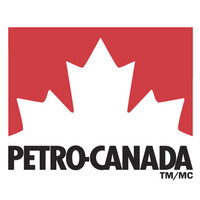
Petro-Canada Company Cyber Security Posture
petro-canada.caAs a Suncor business, Petro-Canada is proudly Canadian, with a leading national network of retail stations, Petro-Pass cardlocks and bulk facilities. We know firsthand what it takes to run a business in Canada. It’s why we go beyond high-quality fuels and offer more ways to help you find efficiencies and get ahead. Through our commercial fuelling network we deliver bulk fuels, Diesel Exhaust Fluid and lubricants wherever and however you need them and our online fuel management tools help keep your fuel spend secure and in check. No matter your business, we are here to help keep you moving toward what matters most to you. When we put the leaf in our logo, we meant it. Because we share more than a country. We share a way to live. #LivebytheLeaf http://www.petro-canada.ca
Petro-Canada Company Details
petrocanada
31 employees
19623
211
Oil and Gas
petro-canada.ca
Scan still pending
PET_4266317
In-progress
Between 800 and 900
This score is AI-generated and less favored by cyber insurers, who prefer the TPRM score.
 Petro-Canada Global Score
Petro-Canada Global Score.png)

Petro-Canada Company Scoring based on AI Models
| Model Name | Date | Description | Current Score Difference | Score |
|---|---|---|---|---|
| AVERAGE-Industry | 03-12-2025 | This score represents the average cybersecurity rating of companies already scanned within the same industry. It provides a benchmark to compare an individual company's security posture against its industry peers. | N/A | Between 800 and 900 |
Petro-Canada Company Cyber Security News & History
| Entity | Type | Severity | Impact | Seen | Url ID | Details | View |
|---|---|---|---|---|---|---|---|
| Suncor | Cyber Attack | 60 | 2 | 06/2023 | SUN23169723 | Link | |
Rankiteo Explanation : Attack limited on finance or reputationDescription: A cyberattack, according to the Canadian energy corporation Suncor, was to blame for the widespread disruptions that shut down services over the weekend. The business has alerted the necessary authorities and is taking action while collaborating with outside experts to investigate and fix the matter. Problems were reported in Calgary, Ottawa, Toronto, and several other significant Canadian cities. Petro-Canada finally turned to Twitter to recognise the problems and to state that they were being fixed. | |||||||
| Petro-Canada | Cyber Attack | 60 | 2 | 06/2023 | PET01310723 | Link | |
Rankiteo Explanation : Attack limited on finance or reputationDescription: A cyberattack, according to the Canadian energy corporation Suncor, was to blame for the widespread disruptions that shut down services over the weekend. The business has alerted the necessary authorities and is taking action while collaborating with outside experts to investigate and fix the matter. Problems were reported in Calgary, Ottawa, Toronto, and several other significant Canadian cities. Petro-Canada finally turned to Twitter to recognize the problems and to state that they were being fixed. | |||||||
| Suncor | Data Leak | 50 | 1 | 06/2023 | SUN41914823 | Link | |
Rankiteo Explanation : Attack without any consequencesDescription: A cyber security incident has happened to Suncor, the business has contacted the necessary authorities and is taking action by consulting with outside specialists to look into and remedy the matter. They do not currently know of any proof that customer, supplier, or employee data has been hacked or misused as a result of this circumstance. According to the company, some business dealings with clients and suppliers can be affected as they try to fix the situation. | |||||||
Petro-Canada Company Subsidiaries

As a Suncor business, Petro-Canada is proudly Canadian, with a leading national network of retail stations, Petro-Pass cardlocks and bulk facilities. We know firsthand what it takes to run a business in Canada. It’s why we go beyond high-quality fuels and offer more ways to help you find efficiencies and get ahead. Through our commercial fuelling network we deliver bulk fuels, Diesel Exhaust Fluid and lubricants wherever and however you need them and our online fuel management tools help keep your fuel spend secure and in check. No matter your business, we are here to help keep you moving toward what matters most to you. When we put the leaf in our logo, we meant it. Because we share more than a country. We share a way to live. #LivebytheLeaf http://www.petro-canada.ca
Access Data Using Our API

Get company history
.png)
Petro-Canada Cyber Security News
Suncor Energy confirms hackers breached Petro-Canada gas stations’ customer rewards data
Suncor originally disclosed the incident on June 25, and warned that Petro-Canada gas stations and some supplier payments would be disrupted.
Suncor Energy cybersecurity incident once again highlights need for cyber resilience, operational continuity
The cyberattack on Suncor Energy's systems led to technical issues that prevented customers from paying with credit cards or rewards points at ...
Suncor Energy cyberattack impacts Petro-Canada gas stations
Petro-Canada gas stations across Canada are impacted by technical problems preventing customers from paying with credit card or rewards ...
Suncor Energy hit by cyber attack; Petro-Canada gas stations impacted
Calgary-based Suncor Energy is the latest oil company to report it experienced a cyber security incident. Calgary Herald.
'Unauthorized party' obtained Petro-Points members' contact information in IT breach, company says
An unauthorized party obtained Petro-Points members' basic contact information in a cybersecurity incident that happened roughly two weeks ...
Critical sectors short on cybersecurity pros
Canada — and most of the world — is facing a shortage of cybersecurity professionals across all sectors which could reach 85 million workers by ...
Suncor Energy Confirms Cyber Attack On Petro-Canada
Holding company Suncor Energy has conceded that the IT outage was a cyber attack on Petro-Canada. No details on the attack were shared.
Cyber Attack on Suncor Energy Indefinitely Suspends Electronic Payments at Canadian Gas Stations
A cyber attack on parent company Suncor Energy has disrupted the company's payment and loyalty reward systems.
Petro-Canada reports service restoration after suspected Suncor breach
Petro-Canada said it has made progress in restoring full service after a cyber incident at parent firm Suncor Energy.

Petro-Canada Similar Companies
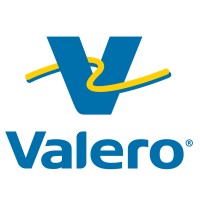
Valero
Valero is an international manufacturer and marketer of transportation fuels and petrochemical products. We are a Fortune 500 company based in San Antonio, Texas, fueled by nearly 10,000 employees and 15 petroleum refineries with a combined throughput capacity of approximately 3.2 million barrels pe
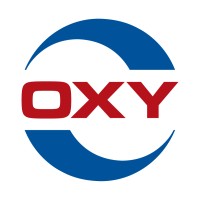
Oxy
Oxy is an international energy company with assets primarily in the United States, the Middle East and North Africa. We are one of the largest oil producers in the U.S., including a leading producer in the Permian and DJ basins, and offshore Gulf of Mexico. Our midstream and marketing segment provid
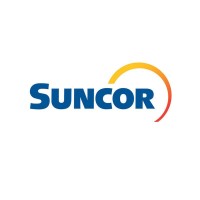
Suncor
In 1967, we pioneered commercial development of Canada's oil sands – one of the largest petroleum resource basins in the world. Since then, Suncor has grown to become a globally competitive integrated energy company with a balanced portfolio of high-quality assets, a strong balance sheet and signifi

Kuwait Petroleum Corporation
Kuwait Petroleum Corporation is the State of Kuwait's state-owned entity responsible for Kuwait's hydrocarbon interests throughout the world. As a leader in the global energy business, we contribute to meeting the world's essential oil and gas requirements by exploring for, producing, refining, tra

Gas Natural Fenosa
Gas Natural Fenosa is a leading multi-national in the gas and power sectors. It operates in 23 countries and has more than 20 million customers around the world. Following its recent acquisition of UNIÓN FENOSA, Spain's third biggest power company, Gas Natural Fenosa has achieved its objective of
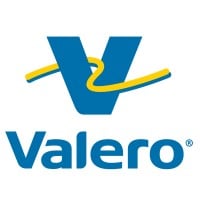
Valero
Valero is an international manufacturer and marketer of transportation fuels and petrochemical products. We are a Fortune 500 company based in San Antonio, Texas, fueled by nearly 10,000 employees and 15 petroleum refineries with a combined throughput capacity of approximately 3.2 million barrels pe

Frequently Asked Questions (FAQ) on Cybersecurity Incidents
Petro-Canada CyberSecurity History Information
Total Incidents: According to Rankiteo, Petro-Canada has faced 3 incidents in the past.
Incident Types: The types of cybersecurity incidents that have occurred include ['Cyber Attack', 'Data Leak'].
Total Financial Loss: The total financial loss from these incidents is estimated to be {total_financial_loss}.
Cybersecurity Posture: The company's overall cybersecurity posture is described as As a Suncor business, Petro-Canada is proudly Canadian, with a leading national network of retail stations, Petro-Pass cardlocks and bulk facilities. We know firsthand what it takes to run a business in Canada. It’s why we go beyond high-quality fuels and offer more ways to help you find efficiencies and get ahead. Through our commercial fuelling network we deliver bulk fuels, Diesel Exhaust Fluid and lubricants wherever and however you need them and our online fuel management tools help keep your fuel spend secure and in check. No matter your business, we are here to help keep you moving toward what matters most to you. When we put the leaf in our logo, we meant it. Because we share more than a country. We share a way to live. #LivebytheLeaf http://www.petro-canada.ca.
Detection and Response: The company detects and responds to cybersecurity incidents through {description_of_detection_and_response_process}.
Incident Details
Incident 1: Ransomware Attack
Title: {Incident_Title}
Description: {Brief_description_of_the_incident}
Date Detected: {Detection_Date}
Date Publicly Disclosed: {Disclosure_Date}
Date Resolved: {Resolution_Date}
Type: {Type_of_Attack}
Attack Vector: {Attack_Vector}
Vulnerability Exploited: {Vulnerability}
Threat Actor: {Threat_Actor}
Motivation: {Motivation}
Incident 2: Data Breach
Title: {Incident_Title}
Description: {Brief_description_of_the_incident}
Date Detected: {Detection_Date}
Date Publicly Disclosed: {Disclosure_Date}
Date Resolved: {Resolution_Date}
Type: {Type_of_Attack}
Attack Vector: {Attack_Vector}
Vulnerability Exploited: {Vulnerability}
Threat Actor: {Threat_Actor}
Motivation: {Motivation}
Common Attack Types: The most common types of attacks the company has faced are ['Cyber Attack'].
Identification of Attack Vectors: The company identifies the attack vectors used in incidents through {description_of_identification_process}.
Impact of the Incidents
Incident 1: Ransomware Attack
Financial Loss: {Financial_Loss}
Data Compromised: {Data_Compromised}
Systems Affected: {Systems_Affected}
Downtime: {Downtime}
Operational Impact: {Operational_Impact}
Conversion Rate Impact: {Conversion_Rate_Impact}
Revenue Loss: {Revenue_Loss}
Customer Complaints: {Customer_Complaints}
Brand Reputation Impact: {Brand_Reputation_Impact}
Legal Liabilities: {Legal_Liabilities}
Identity Theft Risk: {Identity_Theft_Risk}
Payment Information Risk: {Payment_Information_Risk}
Incident 2: Data Breach
Financial Loss: {Financial_Loss}
Data Compromised: {Data_Compromised}
Systems Affected: {Systems_Affected}
Downtime: {Downtime}
Operational Impact: {Operational_Impact}
Conversion Rate Impact: {Conversion_Rate_Impact}
Revenue Loss: {Revenue_Loss}
Customer Complaints: {Customer_Complaints}
Brand Reputation Impact: {Brand_Reputation_Impact}
Legal Liabilities: {Legal_Liabilities}
Identity Theft Risk: {Identity_Theft_Risk}
Payment Information Risk: {Payment_Information_Risk}
Average Financial Loss: The average financial loss per incident is {average_financial_loss}.
Commonly Compromised Data Types: The types of data most commonly compromised in incidents are {list_of_commonly_compromised_data_types}.
Incident 1: Ransomware Attack
Entity Name: {Entity_Name}
Entity Type: {Entity_Type}
Industry: {Industry}
Location: {Location}
Size: {Size}
Customers Affected: {Customers_Affected}
Incident 2: Data Breach
Entity Name: {Entity_Name}
Entity Type: {Entity_Type}
Industry: {Industry}
Location: {Location}
Size: {Size}
Customers Affected: {Customers_Affected}
Response to the Incidents
Incident 1: Ransomware Attack
Incident Response Plan Activated: {Yes/No}
Third Party Assistance: {Yes/No}
Law Enforcement Notified: {Yes/No}
Containment Measures: {Containment_Measures}
Remediation Measures: {Remediation_Measures}
Recovery Measures: {Recovery_Measures}
Communication Strategy: {Communication_Strategy}
Adaptive Behavioral WAF: {Adaptive_Behavioral_WAF}
On-Demand Scrubbing Services: {On_Demand_Scrubbing_Services}
Network Segmentation: {Network_Segmentation}
Enhanced Monitoring: {Enhanced_Monitoring}
Incident 2: Data Breach
Incident Response Plan Activated: {Yes/No}
Third Party Assistance: {Yes/No}
Law Enforcement Notified: {Yes/No}
Containment Measures: {Containment_Measures}
Remediation Measures: {Remediation_Measures}
Recovery Measures: {Recovery_Measures}
Communication Strategy: {Communication_Strategy}
Adaptive Behavioral WAF: {Adaptive_Behavioral_WAF}
On-Demand Scrubbing Services: {On_Demand_Scrubbing_Services}
Network Segmentation: {Network_Segmentation}
Enhanced Monitoring: {Enhanced_Monitoring}
Incident Response Plan: The company's incident response plan is described as {description_of_incident_response_plan}.
Third-Party Assistance: The company involves third-party assistance in incident response through {description_of_third_party_involvement}.
Data Breach Information
Incident 2: Data Breach
Type of Data Compromised: {Type_of_Data}
Number of Records Exposed: {Number_of_Records}
Sensitivity of Data: {Sensitivity_of_Data}
Data Exfiltration: {Yes/No}
Data Encryption: {Yes/No}
File Types Exposed: {File_Types}
Personally Identifiable Information: {Yes/No}
Prevention of Data Exfiltration: The company takes the following measures to prevent data exfiltration: {description_of_prevention_measures}.
Handling of PII Incidents: The company handles incidents involving personally identifiable information (PII) through {description_of_handling_process}.
Ransomware Information
Incident 1: Ransomware Attack
Ransom Demanded: {Ransom_Amount}
Ransom Paid: {Ransom_Paid}
Ransomware Strain: {Ransomware_Strain}
Data Encryption: {Yes/No}
Data Exfiltration: {Yes/No}
Ransom Payment Policy: The company's policy on paying ransoms in ransomware incidents is described as {description_of_ransom_payment_policy}.
Data Recovery from Ransomware: The company recovers data encrypted by ransomware through {description_of_data_recovery_process}.
Regulatory Compliance
Incident 1: Ransomware Attack
Regulations Violated: {Regulations_Violated}
Fines Imposed: {Fines_Imposed}
Legal Actions: {Legal_Actions}
Regulatory Notifications: {Regulatory_Notifications}
Incident 2: Data Breach
Regulations Violated: {Regulations_Violated}
Fines Imposed: {Fines_Imposed}
Legal Actions: {Legal_Actions}
Regulatory Notifications: {Regulatory_Notifications}
Regulatory Frameworks: The company complies with the following regulatory frameworks regarding cybersecurity: {list_of_regulatory_frameworks}.
Ensuring Regulatory Compliance: The company ensures compliance with regulatory requirements through {description_of_compliance_measures}.
Lessons Learned and Recommendations
Incident 1: Ransomware Attack
Lessons Learned: {Lessons_Learned}
Incident 2: Data Breach
Lessons Learned: {Lessons_Learned}
Incident 1: Ransomware Attack
Recommendations: {Recommendations}
Incident 2: Data Breach
Recommendations: {Recommendations}
Key Lessons Learned: The key lessons learned from past incidents are {list_of_key_lessons_learned}.
Implemented Recommendations: The company has implemented the following recommendations to improve cybersecurity: {list_of_implemented_recommendations}.
References
Additional Resources: Stakeholders can find additional resources on cybersecurity best practices at {list_of_additional_resources}.
Investigation Status
Incident 1: Ransomware Attack
Investigation Status: {Investigation_Status}
Incident 2: Data Breach
Investigation Status: {Investigation_Status}
Communication of Investigation Status: The company communicates the status of incident investigations to stakeholders through {description_of_communication_process}.
Stakeholder and Customer Advisories
Incident 1: Ransomware Attack
Stakeholder Advisories: {Stakeholder_Advisories}
Customer Advisories: {Customer_Advisories}
Incident 2: Data Breach
Stakeholder Advisories: {Stakeholder_Advisories}
Customer Advisories: {Customer_Advisories}
Advisories Provided: The company provides the following advisories to stakeholders and customers following an incident: {description_of_advisories_provided}.
Initial Access Broker
Incident 1: Ransomware Attack
Entry Point: {Entry_Point}
Reconnaissance Period: {Reconnaissance_Period}
Backdoors Established: {Backdoors_Established}
High Value Targets: {High_Value_Targets}
Data Sold on Dark Web: {Yes/No}
Incident 2: Data Breach
Entry Point: {Entry_Point}
Reconnaissance Period: {Reconnaissance_Period}
Backdoors Established: {Backdoors_Established}
High Value Targets: {High_Value_Targets}
Data Sold on Dark Web: {Yes/No}
Monitoring and Mitigation of Initial Access Brokers: The company monitors and mitigates the activities of initial access brokers through {description_of_monitoring_and_mitigation_measures}.
Post-Incident Analysis
Incident 1: Ransomware Attack
Root Causes: {Root_Causes}
Corrective Actions: {Corrective_Actions}
Incident 2: Data Breach
Root Causes: {Root_Causes}
Corrective Actions: {Corrective_Actions}
Post-Incident Analysis Process: The company's process for conducting post-incident analysis is described as {description_of_post_incident_analysis_process}.
Corrective Actions Taken: The company has taken the following corrective actions based on post-incident analysis: {list_of_corrective_actions_taken}.
Additional Questions
General Information
Ransom Payment History: The company has {paid/not_paid} ransoms in the past.
Last Ransom Demanded: The amount of the last ransom demanded was {last_ransom_amount}.
Last Attacking Group: The attacking group in the last incident was {last_attacking_group}.
Incident Details
Most Recent Incident Detected: The most recent incident detected was on {most_recent_incident_detected_date}.
Most Recent Incident Publicly Disclosed: The most recent incident publicly disclosed was on {most_recent_incident_publicly_disclosed_date}.
Most Recent Incident Resolved: The most recent incident resolved was on {most_recent_incident_resolved_date}.
Impact of the Incidents
Highest Financial Loss: The highest financial loss from an incident was {highest_financial_loss}.
Most Significant Data Compromised: The most significant data compromised in an incident was {most_significant_data_compromised}.
Most Significant System Affected: The most significant system affected in an incident was {most_significant_system_affected}.
Response to the Incidents
Third-Party Assistance in Most Recent Incident: The third-party assistance involved in the most recent incident was {third_party_assistance_in_most_recent_incident}.
Containment Measures in Most Recent Incident: The containment measures taken in the most recent incident were {containment_measures_in_most_recent_incident}.
Data Breach Information
Most Sensitive Data Compromised: The most sensitive data compromised in a breach was {most_sensitive_data_compromised}.
Number of Records Exposed: The number of records exposed in the most significant breach was {number_of_records_exposed}.
Ransomware Information
Highest Ransom Demanded: The highest ransom demanded in a ransomware incident was {highest_ransom_demanded}.
Highest Ransom Paid: The highest ransom paid in a ransomware incident was {highest_ransom_paid}.
Regulatory Compliance
Highest Fine Imposed: The highest fine imposed for a regulatory violation was {highest_fine_imposed}.
Most Significant Legal Action: The most significant legal action taken for a regulatory violation was {most_significant_legal_action}.
Lessons Learned and Recommendations
Most Significant Lesson Learned: The most significant lesson learned from past incidents was {most_significant_lesson_learned}.
Most Significant Recommendation Implemented: The most significant recommendation implemented to improve cybersecurity was {most_significant_recommendation_implemented}.
References
Most Recent Source: The most recent source of information about an incident is {most_recent_source}.
Most Recent URL for Additional Resources: The most recent URL for additional resources on cybersecurity best practices is {most_recent_url}.
Investigation Status
Current Status of Most Recent Investigation: The current status of the most recent investigation is {current_status_of_most_recent_investigation}.
Stakeholder and Customer Advisories
Most Recent Stakeholder Advisory: The most recent stakeholder advisory issued was {most_recent_stakeholder_advisory}.
Most Recent Customer Advisory: The most recent customer advisory issued was {most_recent_customer_advisory}.
Initial Access Broker
Most Recent Entry Point: The most recent entry point used by an initial access broker was {most_recent_entry_point}.
Most Recent Reconnaissance Period: The most recent reconnaissance period for an incident was {most_recent_reconnaissance_period}.
Post-Incident Analysis
Most Significant Root Cause: The most significant root cause identified in post-incident analysis was {most_significant_root_cause}.
Most Significant Corrective Action: The most significant corrective action taken based on post-incident analysis was {most_significant_corrective_action}.
What Do We Measure?
















Every week, Rankiteo analyzes billions of signals to give organizations a sharper, faster view of emerging risks. With deeper, more actionable intelligence at their fingertips, security teams can outpace threat actors, respond instantly to Zero-Day attacks, and dramatically shrink their risk exposure window.
These are some of the factors we use to calculate the overall score:
Identify exposed access points, detect misconfigured SSL certificates, and uncover vulnerabilities across the network infrastructure.
Gain visibility into the software components used within an organization to detect vulnerabilities, manage risk, and ensure supply chain security.
Monitor and manage all IT assets and their configurations to ensure accurate, real-time visibility across the company's technology environment.
Leverage real-time insights on active threats, malware campaigns, and emerging vulnerabilities to proactively defend against evolving cyberattacks.




